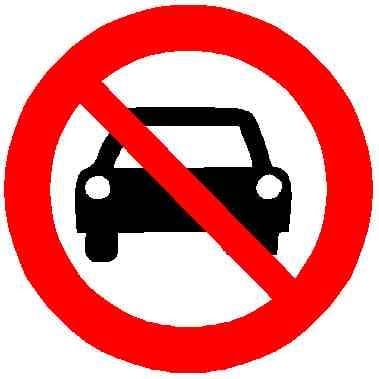- cross-posted to:
- fuck_cars@lemmy.ml
- cross-posted to:
- fuck_cars@lemmy.ml
A new housing development outside Phoenix is looking towards European cities for inspiration and shutting out the cars. So far residents love it - The Guardian
I really like it, I got excited. But …can we please build some for sale units in walkable areas and not just rental units? This live-by-subscription bullshit is out of hand
deleted by creator
Careful. You start talking about things being 15 minutes away and conservative whackos will claim you’re trying to put them in an open air prison.
open air prison
I bet they’re pro Israel too at the same time
2000% yes.
to hell with them
I wonder if this is a college thing. Most of us who have gone to college probably experienced a 15 minute walkable “city “ and are more likely to appreciate it
deleted by creator
I’m not them, but generally, the appeal of ownership is that if you don’t own it, then somebody else does, and that person or company is making profit from the relationship. So, ownership seems like it should be cheaper.
To me it’s about having a real home that you can call yours and the stability that comes with that. In many rental properties you can be evicted on the whim of the owner—usually not immediately but after some warning period. With ownership as long as you pay your bills you know you’ll have a place to live and where it will be barring some exceptional catastrophe.
Rent is a scam.
Property is a scam
Property is theft
You can actually fix shit. For example, I have electric heating at the moment. Power bill in winter fucking sucks. If I owned the place I would have installed split air.
Stability (your (fixed rate) mortgage payment doesn’t change, control (within reasonable limitations, I can mount things to walls, pour concrete in the back yard, rip up the floors and put hardwood, etc), the ability to actually pay it off and no longer have to worry about the payment (even if its a long way out for a 30 year mortgage, you build equity instead of just losing all of the money), the ability to sell the house to recoup equity (not in an investment sense, just in a, this house didnt depreciate like a car would so i can make a significant portion of what i paid back when I do decide to move), among other smaller things.
The critical downsides in my experience are maintenance (no repair guy to fix your water heater), and being locked in, especially during turbulent economic times and personal instability (for example, it’s difficult to ‘up and move’ for a new job.)
That being said, there are also legitimate reasons to rent, though I found as I get older, I wanted more stability, and less having to deal with a landlord dictating me (and being able to enter my house and decide how I behave) even if that means sacrificing some other aspects like better locations.
We only live one time, and I like being able to have a home that is mine and my families, it’s given us a lot of opportunities, like being able to immigrate family members and have a place for them to live with us, something that becomes challenging when a landlord tells you that you can’t have additional tenants, for example.
You have a missing closing parenthesis in the first sentence.
deleted by creator
Modification and paint the home the way i like.
I want to drill into my balcony to hang planters and lights, upgrade appliances like a more spacious dishwasher, induction range, and heat pump water heater. I’d like to install ir reflecting window films but that’s not allowed here. I also miss having my tv wall mounted and tidy but lag bolts aren’t allowed. We also aren’t allowed to swap light switches for smart switches or add dimmers (maintenance is required to see the apartment for routine stuff like hvac filter changes and they would notice). I also want to be able to pull additional cat6 through the walls but that’s pretty risky and if anything went wrong we could lose our security deposit. Owning would also open up the possibility of doing my own electrical work, which while it was possible to get away with minor additions in my previous rental (get a work box and cover plate and mount it where it looks like it belongs and nobody bats an eye), I would still be prevented from being able to get approvals on stuff that requires inspection and owner sign-offs such as utility diaconnect switches for battery back up. I’m lucky enough that my previous landlord was willing to sign off on fiber internet installation work but at my new place you need approval to even put up a tv antenna on your balcony.
(I asked this question to try and figure out a financial solution preventing people from having what they want. The hive mind determined this question to be of negative value to the conversation. I removed the offending and distracting question.)
I would love to see more and more car free cities and other urban sprawling, but I have to say, this centralized business model where this developer is providing all the amenities, passes for the near by rail, paying rent to this developer, basically everything goes through them, they even had an app for the community, this is not a viable solution. What happens when this company is not able to sustain the spending or goes bankrupt, or worse sells majority share to an equity company. A decentralized model that goes through local government is a better option and not through for profit company. Even better option is to start from city center not a separate community on the edge of the city. I know what I’m saying sounds impossible in America, and with lobbying buy auto makers and other large corporate overlords, it probably is impossible. Social change can bring about the difference.
Removed by mod
Homer gets a promotion
Why aren’t we building neighborhoods like this in every city in the country?
Old NIMBYs want barren suburbs and they vote
One thing I’ve noticed is that most American cities contain huge, populous suburbs that exert strong political control over the urban core. So in my city the actual dense urban neighborhoods only get one of five votes on the city council (let alone the county where we have straight up nazis on board). This results in an inability to implement many of the policies that we here in the city know will be beneficial, solely because residents in the other 4 suburban districts want to maintain their ability to drive through and park at desirable downtown amenities. In my opinion this represents a failure of democracy because our neighborhoods have very little say in rule making or development even in our immediate surroundings.
It is far less this and far more developers and builders with limited imagination and limited government requirements building subdivisions with thousands of homes that are 10-20 minute drives from commercial districts, combined with state and local governments that are afraid of the political fallout from exercising the right of eminent domain to create trail corridors, so trails are virtually impossible to connect for any distance (except for abandoned rail beds).
deleted by creator
where… where…
where… fuck! Phoenix
Technically Tempe, one of the most bicyclist friendly areas of the country.
Seen today’s hypothetical senate poll?
Nope! What is it?
In a 3 way race for Senate, the Dem candidate beat GOP and Sinema
oh I just meant I didn’t want to live in the hottest city in North America, regardless of their politics
Great idea, but they are taking it too far. People should be allowed to have a car, but it should be parked at the edge of the neighborhood and only be allowed to come in for loading and unloading of heavy things.
That way you have all the benefits and almost no inconvenience at all. We have that in many places in Denmark and it works great.
People should be allowed to have a car, but it should be parked at the edge of the neighborhood and only be allowed to come in for loading and unloading of heavy things
That’s exactly what this development is?
There’s nothing more American than taking ideas to their extreme end.
But, it’s also not surprising to see this behavior given that it’s a response to the other extreme of cars in every space, in every location.
I would take it one step further and say there should probably be small (single lane) roads that run through the neighborhood or an underground carpark with a few freight elevators that run directly into the buildings. Why? For a same reason you mentioned that they should allow cars. If you get a new fridge, imagine trying to walk that sucker from the street to your apartment. You probably wouldn’t need very many freight elevators or access roads to significantly decrease the amount of effort required to get bulky and/or heavy objects to your apartment while still maintaining the general feel and spirit of a car-less community.
You really don’t need new fridges that often, the couple times you do just put them on boards on casters and shove. If you can’t: ask your neighbors, it’s a good bonding experience.
What about garbage disposal.
You going to pull that around on casters as well?
Gee I wonder how the pedestrian-only streets in Denmark are doing it? I guess they aren’t and are full of trash.
Stop conflating private car owner-ship with municipal service vehicles.
To be fair a pedestrian only street in a town with cars is very different from a street-less town.
It’s not just one street, though. It’s a series of connected streets. They’re actually quite comparable to superblocks in Aarhus, Copenhagen and Aalborg.
I guess they aren’t and are full of trash.
I mean… it is full of pesky Danish people tho (/s)
Have you never seen waste containers on wheels?
Great to see, except Phoenix is not going to be livable fairly soon due to climate change. This project needs to be done in the Midwest.
Somewhat. Cities vary widely in risk and readiness.
https://listwithclever.com/research/top-cities-impacted-climate-change/
Where in the Midwest? Much of the Mississippi River region is predicted to have some really nasty wet bulb temps. But areas around the Great Lakes (maybe not Chicago) sound like a safe bet. But yeah, when I first heard of this project I was shocked they put it in Tempe of all places.
I’m not sure there’s much evidence to support this claim. It certainly will be extremely hot but probably not more than some of the hottest cities on earth today. For example, the average temperature in Kuwait City is 10 degrees hotter than Phoenix in July, and people have found a way to live there. People will likely adapt, though it definitely will have an impact on walkability during those hot months.
It’s not the heat, it’s the lack of water.
Maybe but the amount of water needed to sustain human life is quite low. If water is prioritized for human use over agriculture and non-functional landscaping there should be enough. Right now much of it goes to non-essential things.
People in Phoenix treat their grass like they treat their guns, you can take their grass from their cold dead hands. There’s no reason there should be year-round mosquitoes in a desert city.
At least it’s not Kuwait. 🤓 Development in Arizona, I think, isn’t happening to meet a demand but rather being funded by eccentric people and being met with a government with less taxes and regulations.
Walkable towns are better objectively.
Subjectively.
Like most things, it is about preference and/or what the measure of success is. Some people prefer the tighter, mixed-use concepts and some don’t. I know people that would love a concept like this and I know people that would be overwhelmed and depressed.
I just wanna add that walkable, while always advocated as a dense “15 minutes city” I hope doesn’t always have to be. There are examples of less dense walkable places, too. A little village with a market to one side, perhaps? “Walkable” exactly refers to a design pattern focused on pedestrian safety and pedestrian-scaled development. Aaaand that could exclude density, at the cost of population size.
Check out some random Dutch suburbs. For example, a neighbourhood in what is generally regarded as a shit city: https://maps.app.goo.gl/UYSB2iLeEbvPea4G6
No high rise construction, single family homes, 15 min walk from the supermarket (or 3 by bike), even less to a school (9 min walk if you make an effort to pick a bad spot), and hardly anyone lives by a big road and most places can be reached without ever crossing one.
And this is a city that is generally regarded as crappy, soulless and awful to the point that it’s a meme. (Lelystad is the Almere of Flevoland ;) )
Omg I thought it was just gonna look like my town but with bike lanes. No, your worst city is really creative actually. This is so quiet and safe, contrary to anything I’ve ever seen in America.
deleted by creator
Right, how about biking 3 minutes to the store? Make it 6 there and 2 back due to the height difference. Not every trip is 30+ minutes to work.
São Paulo is pretty much as hilly as you can get, beset by mounts on all sides but one. People still bike, here.
deleted by creator
I’ll give you that, biking long distances is reserved for when you can bathe afterwards. Thankfully, you rarely need to bike long distances.
ebikes take the sweat out of hilly commutes.
deleted by creator
They’re coming down in price, many places offer subsidies to get one, and there are puncture-resistant tires that do wonders. That said, I also live too far from work to bike, because I can’t afford to live where I work.
Nah.
Walkable towns aren’t just concepts, they are how civilization is structured in most other countries.
What about mixed neighborhoods makes some people depressed?
Low density suburbs limited sightlines allow for minimum visible injustice (MVI).
Mixed neighborhoods…you might see poor people.
Interested in going there to look at it. But I have no reason to go to Phoenix.
https://culdesac.com/ if you actually want to see pictures of the place. The article just has a bunch of close up photos of walls and people.
Ughh I love it. Can’t wait for urbanist youtube to dive into the details, and follow up on how well it works out.
Yeah, thats why theyre so expensive, lots of people want it and very few places offer it.
This sounds quite a bit like what it was like when I lived in New York City- I didn’t need a car to live (* couldn’t afford to park it), everything I needed was available either by walking or transit (or riding my bike).
With that said, I am suspicious of venture-capital-funded re-inventions of this model- who gets to say what amenities and concessions are available, and who profits from fulfilling the kinds of needs a neighborhood like that has?
NYC has a lot of built-in history (and with it, institutions developed from the lessons learned, like rent control to protect renters and such) and if those kinds of protections aren’t included in this model, I would be willing to bet there will be abuses and problems. Building a simulacrum of an established model but where you own all the governing institutions seems… a bit of a red flag, no matter how well-intentioned it might be.
I would live there if I could afford it.
I think it’s cool in theory, but the area is having a housing accessibility crisis, and it seems to be part of that problem and uses this format to hide that.
(I live in Finland) I was told that in America you cannot travel much by walking because 1) since it was built for cars, stuff is far away from stuff 2) police might stop and question you, give a lift, send home or even arrest you for walking
Disabled need not apply.
I don’t know, it looks fairly accessible. I’m not sure someone with a mobility issue that makes it necessary to have a car at the home directly would find any reason to desire living in a “walkable” neighborhood, though.


















